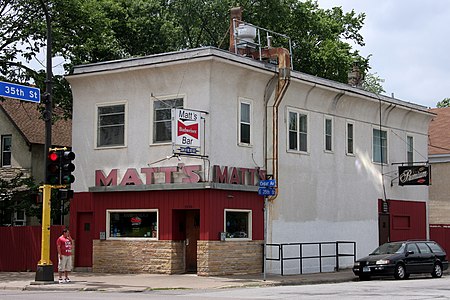Dolal Idd was a 23-year-old Somali-American man who was killed in an exchange of gunfire with Minneapolis police officers at approximately 6:15 p.m. CST on December 30, 2020, after he shot at them from inside the car he was driving. The fatal encounter happened in the U.S. state of Minnesota during a police sting operation.Minneapolis police were investigating Idd for illegal possession and sale of firearms. Idd was prohibited from possessing firearms as part of his probation from a prior felony conviction. A confidential police informant intermediated as a buyer for a semi-automatic pistol, and made arrangements for a buyer to purchase the gun from Idd so that police officers could arrest him. Video captured by a police body camera the evening of December 30 showed police officers attempting to arrest Idd who struck several police vehicles with the car he was driving. After the vehicle driven by Idd was blocked by several police vehicles to prevent escape, Idd fired a handgun from inside the car he was driving through a rolled up window that shattered outward and hit a police vehicle containing several police officers. Minneapolis police officers Paul Huynh, Darcy Klund, and Jason Schmit returned several rounds of gunfire, killing Idd at the scene.The shooting on December 30, 2020, took place in the parking lot of a busy Holiday gas station at the intersection of Cedar Avenue and East 36th Street in the Powderhorn Park neighborhood of Minneapolis, one mile (1.6 km) from the location where George Floyd was murdered by a Minneapolis police officer on May 25, 2020. Floyd's murder resulted in prolonged local unrest and worldwide protests. Idd's death was the first killing by a Minneapolis police officer since that of Floyd. The December 30, 2020, shooting affected the local community still in mourning over Floyd's murder seven months prior, and reignited local debate over police brutality and race relations. In several rallies, protesters questioned the police narrative of the December 30 incident and if police officers could have used better de-escalation tactics to prevent an exchange of gunfire.In the vehicle driven by Idd, law enforcement investigators recovered a pistol and two spent ammunition cartridges on the driver's side, as well as a backpack on the passenger's side that contained ammunition and a Leinad PM-11 machine pistol, the type of gun a confidential police informant arranged to purchase from Idd. The Minneapolis police, citing video footage and witness statements from the incident, said officers returned fire in response to an initial shot by a civilian. The Minnesota Bureau of Criminal Apprehension opened an investigation of the officer-involved shooting. The bureau's preliminary report, issued on January 4, 2021, said that Idd struck several police vehicles with the car he was driving and that he had shot his gun first before police returned fire.Minneapolis police officers Huynh, Klund, and Schmit fired their weapons at Idd during the December 30 incident. Investigators at the scene recovered six bullets and seven bullet fragments from the rounds that the officers fired at Idd. An autopsy report classified Idd's death as a homicide, due to multiple gunshot wounds. The conduct of the officers, and if they were legally justified in using force, was reviewed by the Dakota County attorney's office. The final charging decision memorandum it released on August 6, 2021, said the officers' actions were justified and that no criminal charges would be filed against them.








